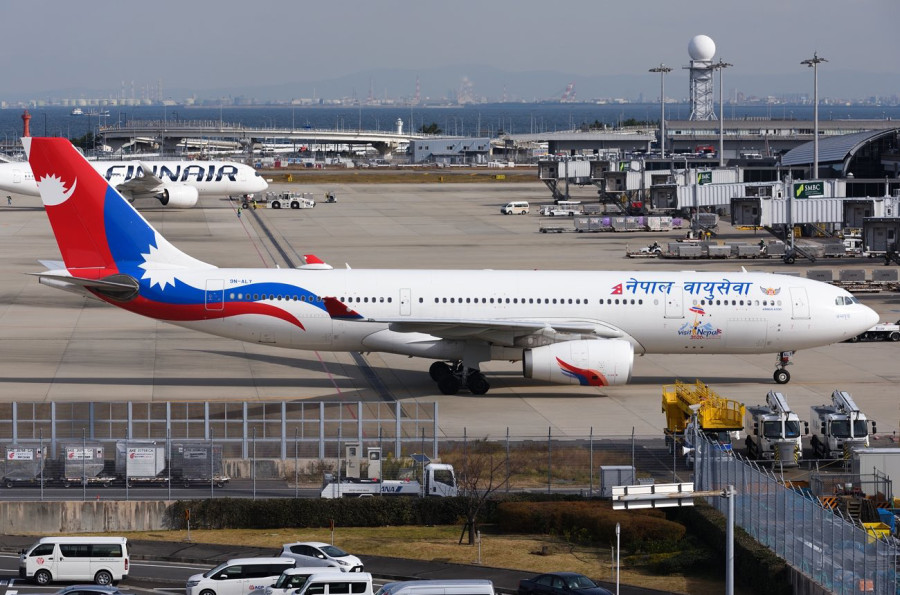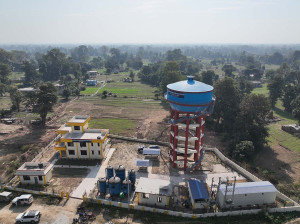Money
Autumn travel rush pulls Nepal Airlines back from the brink
The bonanza allowed the teetering national flag carrier to repay creditors breathing down its neck.
Sangam Prasain
The autumn travel rush has pulled Nepal Airlines back from the brink of bankruptcy as full-fare passengers filled its flights, allowing the teetering national flag carrier to repay creditors breathing down its neck.
After having missed three quarterly instalments, Nepal Airlines said it paid Rs572 million to the Citizens Investment Trust on Wednesday, and set aside Rs440 million for the Employees Provident Fund to whom payment is due on January 29.
Out of the total amount, Rs348.5 million is for the repayment of the principal and interest for its narrow body Airbus A320 jets, and the rest for the wide body A330 jets. “We have cleared only 50 percent of the outstanding loans for the wide body aircraft, and the remainder will be paid by January-end,” said Umesh Poudel, the carrier's financial director.
“Our financial health improved to some extent in the autumn when the festive season and the peak tourist season occur,” he said. Thousands of Nepalis residing overseas return home to celebrate the Dashain and Tihar festivals, bringing a bonanza for airlines as seats are booked at premium prices, and the seats are almost sold out.
The September-November period also accounts for 35 percent of Nepal’s total tourists arrivals.
Poudel said that the Finance Ministry was preparing for the capitalisation of Nepal Airlines defaulted loans. Capitalisation is adding the unpaid interest to the principal.
Madan Kharel, executive chairman of Nepal Airlines, said that seat occupancy had grown to 80 percent resulting in a healthy cash flow as its two A330 jets were being utilised for the Japan service. “Sectors like Dubai, Doha and Delhi have performed well in terms of occupancy and yield,” he said.
Kharel said they expected this year to be good because of Visit Nepal 2020. “We are receiving good inquiries from Japan and other sectors.”
Kharel said that high interest rates and costly aviation fuel in Nepal could prevent the carrier from shoring up its financial position. “We are paying 10.5 percent interest on our loans, and everyone knows how expensive jet fuel is in Nepal. The government is not bothered about addressing both these burning problems,” he said. “We want to grow, but we are being held back.”
In November 2018, less than four months after making the largest jet purchase in the history of Nepali aviation, Nepal Airlines Corporation, which was on a mission to reclaim its long-lost glory, announced it was running out of cash and close to bankruptcy.
During that time, its two A330 jets were in the air for less than seven hours daily, less than half the required flight time needed to generate a decent profit.
Subsequently, the cash-strapped corporation started defaulting on loans. It was the first time the airline had defaulted on a debt payment even though it has a long history of poor financial performance in the past several years.
The airline has been seeking a bailout fund of Rs20 billion from the Finance Ministry. Currently, the corporation’s loans from various institutions stand at Rs40 billion, and this translates into Rs3.66 billion in interest payments annually.
To Guangzhou and Narita from March
Nepal Airlines will be flying to China’s third largest city Guangzhou from March 15, and to Narita International Airport in Tokyo from March 2, Executive Chairman Madan Kharel said.
Nepal Airlines decided to switch to Narita in a bid to keep its Japan service alive after a disastrous launch to Osaka's Kansai International Airport. It began its Kathmandu-Osaka service on August 29 with an upbeat outlook, but disappointment set in with passenger occupancy remaining below 30 percent on all its flights in September.
October and November proved to be a bonanza for the airline, but that did not help it to reach the break-even point, according to airline officials.
The corporation said that the Guangzhou service will be more challenging because it will have to compete with China Southern, which is the world's sixth largest passenger carrier.




 20.12°C Kathmandu
20.12°C Kathmandu















